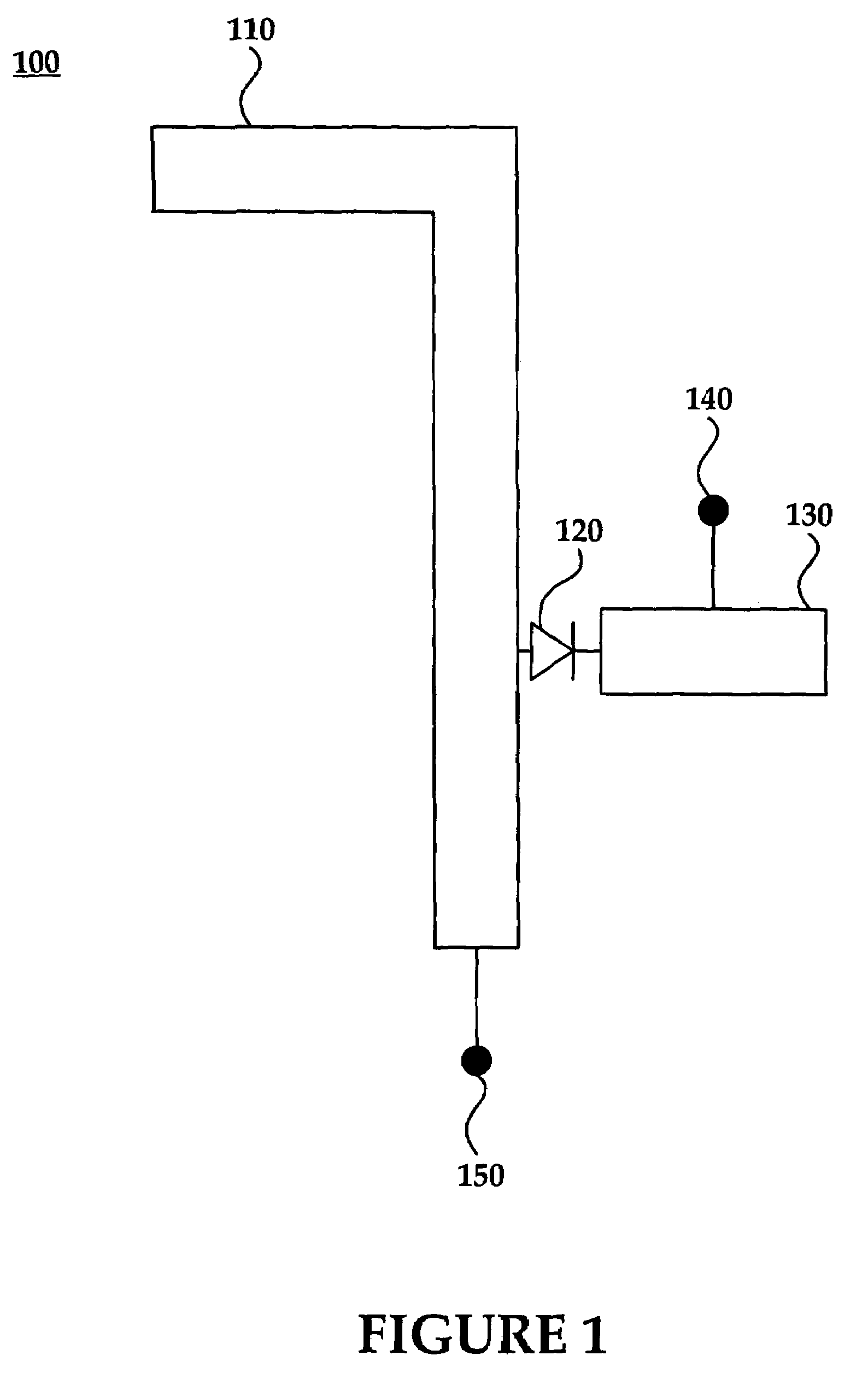Reducing stray capacitance in antenna element switching
a technology of antenna element and capacitance, applied in the field of wireless communications networks, can solve the problems of undesirable capacitance, stray capacitance, and the burden on wireless communications systems, and achieve the effect of reducing the stray capacitance of the pin diod
- Summary
- Abstract
- Description
- Claims
- Application Information
AI Technical Summary
Benefits of technology
Problems solved by technology
Method used
Image
Examples
Embodiment Construction
[0021]The disclosed antenna elements and antenna arrays utilizing such elements may be configured to receive an RF signal. A biased semiconductor device such as a PIN diode may be coupled to the antenna element receiving the RF signal. When forward biased or “on,” the PIN diode may behave as a variable resistor. Alternatively, the PIN diode may behave as a parallel plate capacitor when the diode is zero or reverse biased (“off”).
[0022]Subject to the bias of the aforementioned PIN diode, the RF signal may be reflected (e.g., via a forward bias) out-of-phase within a stub to cancel or reduce the received RF signal. By canceling or reducing the RF signal, the signal may no longer propagate through the antenna element thereby functionally turning the element “off.”
[0023]PIN diodes may be used in series to function as “RF switches” for an antenna with multiple antenna elements. An antenna array may include any number of antenna elements that are controlled individually, collectively, or ...
PUM
 Login to View More
Login to View More Abstract
Description
Claims
Application Information
 Login to View More
Login to View More - R&D
- Intellectual Property
- Life Sciences
- Materials
- Tech Scout
- Unparalleled Data Quality
- Higher Quality Content
- 60% Fewer Hallucinations
Browse by: Latest US Patents, China's latest patents, Technical Efficacy Thesaurus, Application Domain, Technology Topic, Popular Technical Reports.
© 2025 PatSnap. All rights reserved.Legal|Privacy policy|Modern Slavery Act Transparency Statement|Sitemap|About US| Contact US: help@patsnap.com



